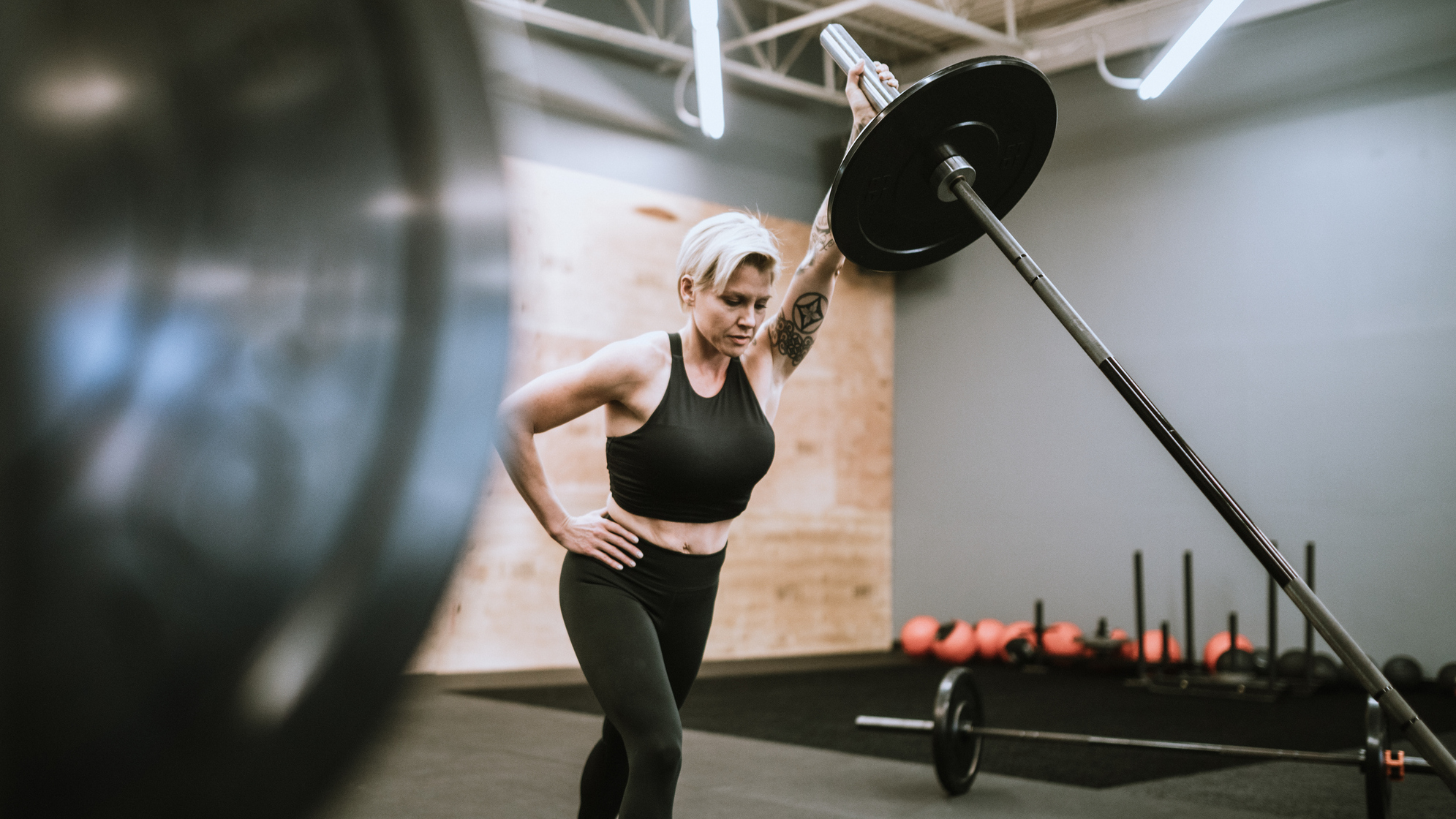If your back hurts when performing shoulder presses, use these three osteopath-approved exercises instead
Use these safe swaps to keep your deltoids strong and spine safe

Safely pressing and carrying weight overhead is a life skill everyone should master. Just like learning to tie a reef knot, tread water or parallel park. It could just save your life—or at least save your spine.
Yet, lately, I’ve noticed my mid and lower back feels like it's going to blow out whenever I press anything overhead. Be it dumbbells, kettlebells, a barbell, or even my two-year-old toddler.
That led me to consult an osteopath, who prescribed a series of seven exercises that have helped improve core stability and spinal mobility to address the root cause of the issue.
Hibah Memon from the Central London Osteopathy & Sports Injury Clinic also recommended three alternative exercises that I—or anyone experiencing pain when pressing weight overhead—can use to maintain upper-body strength while reducing spinal stress.
Three alternative shoulder press exercises that will save your lower back
Here are the safe swaps Memon advised, along with recommended set and rep ranges—and technique pointers to remember before initiating your next overhead lift.
1. Seated dumbbell press with back support
“Using a weight bench with an upright back support can help prevent lumbar extension,” Memon tells Fit&Well. “Focus on maintaining a neutral spine and bracing your abdominal muscles throughout.”
Given you won’t be able to use your lower body to help generate power, it’s a good idea to reduce the weight you lift.
Start your week with achievable workout ideas, health tips and wellbeing advice in your inbox.
Sets: 3-4 Reps: 8-10
- Sit on a weight bench with the back support set between a 75% and 90% incline.
- Hold the dumbbells at shoulder height, palms facing forward.
- Press your lower back into the bench to avoid arching your back.
- Inhale to brace your core muscles.
- Exhale as you press the weights straight overhead, keeping the movement controlled rather than rushed.
- Slowly lower the weights to the start position.
2. Landmine press
Switching from a bilateral move to a unilateral lift, meaning working one side of your body at a time, can make for a “safer overhead pressing action with a more joint-friendly arc”, says Memon. “This helps maintain a neutral posture, while reducing spinal compression.”
Sets: 3-4 Reps: 10-12 on each side
- Use the landmine attachment if your gym has one or angle a barbell into the corner of the room (if permitted by the facility’s staff).
- Hold the end of the bar in one hand at shoulder height, with your body side on to the bar.
- Stand with your feet hip-width apart and a slight bend in your knees.
- Inhale to brace your core, then exhale as you press the weight straight overhead.
- Slowly return to the start.
- Complete all your reps on one side, then switch sides.
3. Half-kneeling dumbbell press
As with the landmine exercise, this unilateral lift allows for a safer, more joint-friendly pressing action. “It also encourages greater core activation and pelvic stability than the traditional shoulder press,” says Memon, due to the half-kneeling set-up. “Just keep the lower body active throughout by engaging your glutes and bracing your core.”
Sets: 3-4 Reps: 8-10
- Start on your left knee with your right knee bent at 90˚ and your right foot flat on the floor in front of you.
- If your left leg is raised, work your right shoulder.
- Hold a dumbbell in your left hand by your left shoulder, palm facing to the right side.
- Inhale to brace your core and glutes, then exhale as you press the weight straight overhead.
- Slowly lower to the start.
- Complete all the reps on one side, then switch sides.
Technique pointers for safer overhead lifting
Engage your core before lifting
“Think of gently bracing your abdominal muscles as if preparing for a light punch to the stomach,” says Memon.
And keep the object you’re lifting close to your center of gravity when bringing it from the floor to overhead.
Avoid push presses and jerks
These moves involve dynamic loading, which Memon says can “jar the lumbar spine if your core and hips aren't yet adequately stable”.
Instead, use lighter weights and practice strict form, keeping your body stable as you use your shoulder muscles to press overhead.
Don’t hold your breath
As when performing the plank exercise, it can be tempting to hold your breath when pressing overhead, but according to Memon, this can “exert undue compression to the spine”.
Instead, inhale as you lower the weight and exhale powerfully as you press the weight overhead.

Sam Rider is an experienced freelance journalist, specialising in health, fitness and wellness. He is also a REPS level 3 qualified personal trainer.
You must confirm your public display name before commenting
Please logout and then login again, you will then be prompted to enter your display name.



